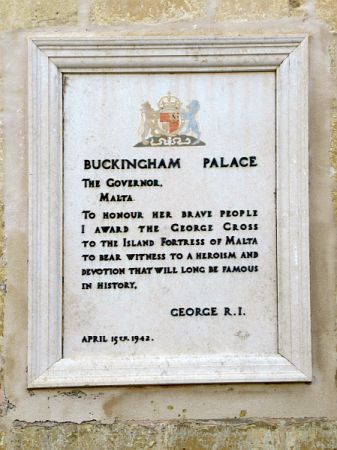February 2023
Gloster Sea Gladiator
Macchi MC.200 Saetta
Gloster Sea Gladiator, “Faith”
Hal Far Fighter Flight, Malta, June 1940.
Matchbox 1/72 with Airfix & other decals
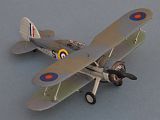
© www.gengriz.co.uk
This build launches what I hope will be a recurring theme across the year and perhaps
beyond. A short break in Malta before Christmas re-
The Gladiator first entered service in 1937 and saw action with the RAF during the early parts of WW2 in almost all war theatres. As it was already badly obsolescent at the start of the war, its successes were limited. Nevertheless, despite its disadvantages, pilots of the RN and RAF flew Gladiators in many of the most bitter battles of the early war, and the successes that they did have are testament to their remarkable courage and skill. The Sea Gladiator was an interim design for the Fleet Air Arm, only differing from the RAF version by fitting an arrestor hook and a dinghy stowage beneath the fuselage.
The Malta Hal Far Fighter flight was established in March 1940, using crated reserve
aircraft held on the island for HMS GLORIOUS. Pilots were all volunteers of whom
only one had any fighter experience. The initial plan was to use the Gladiators to
train pilots prior to the arrival of the promised Hurricanes, but the Italians pre-
Building the Matchbox Gladiator Kit:
I am a great fan of Matchbox biplane kits, which manage to combine all the traditional
virtues of Matchbox, like easy build sequences, accurate and precise flash-
 Mine is a genuine early Matchbox issue (sadly without the box window) which means
it is moulded in garish bright red and subdued grey sprues intended to help the younger
modeller complete it without painting! Given that both kit marking options are in
silver/grey, this is a little perplexing and calls for careful painting during assembly
to ensure none of the pinky-
Mine is a genuine early Matchbox issue (sadly without the box window) which means
it is moulded in garish bright red and subdued grey sprues intended to help the younger
modeller complete it without painting! Given that both kit marking options are in
silver/grey, this is a little perplexing and calls for careful painting during assembly
to ensure none of the pinky-
The cockpit is very simple, with a basic square edged seat and a floor. Given that none of this can be seen through the tiny canopy, this is not a major issue, although a simple rounding off of the seat edges will help. I also added a plastic sheet to represent the locally manufactured bulkhead/armour plate behind the pilot's seat as I suspect that this will be noticeable on completion. There are no build options in the kit, although the poseable rudder is a nice touch and the 4 part engine and cowl are well defined. Fuselage guns are moulded in, but underwing guns are separate parts.
As with all (most) biplanes, adding wing rigging will greatly improve the finished article. I know that many modellers view this task with concern, but it is not as difficult as many think. I use lycra thread, attached with superglue. Careful planning and a bit of patience allows a single thread to cover several sections of rigging, reducing joints and making application of the glue easier. Matchbox have kindly marked the attachment points for the rigging, which is a great help. I also usually apply some thinned paint to the finished thread, which can be a bit alarming as it often loosens its tension until the paint cures.
Part 1
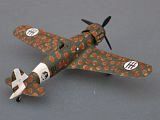
The exact number used by the RAF in Malta is unclear; records suggest that 12 were
available, but only 6 were officially allocated at first. Of these 6, four were
normally operational with the remainder used for spares. One aircraft was quickly
fitted with an engine salvaged from a damaged Bristol Blenheim bomber and sported
a 3 blade 2-
The Sea Gladiators normally flew in flights of 3, establishing the myth of Faith, Hope and Charity as the only aircraft defending the island. Launching as soon as Italian aircraft were sighted, they climbed to maximum height as fast as they could, since this was the only way they stood a chance against the more modern Italian bombers and their fighter escorts.
The first raid on 11 June 1940 saw 3 Sea Gladiators facing 55 Italian bombers plus 18 escorting fighters. With much combat taking place directly over the airfields, coast and towns of Malta at relatively low level, the air battles were witnessed by much of the population whose gratitude for the obvious efforts to strike back in their defence was immense.
The aircraft identified and marked as "Charity" (N5531) was shot down off the coast on 29 July 1940, and its pilot, Flying Officer Hartley, was badly burned. "Hope" was destroyed in an air raid on 4 February 1941, but Faith survived the war and is now on display at the National War Museum in Valletta. The fate of the other Sea Gladiators that saw action over Malta is not as well documented.
In January 1941, HMS ILLUSTRIOUS arrived in Malta for repairs after being bombed during a relief convoy to the island. This prompted major bombing raids on the ship and the densely populated areas around the dockyard. Whilst there, her own Sea Gladiators (806 Sqn) disembarked to Ha Far and joined in the fight, with one of these aircraft, flown by Royal Navy ace Lt Jackie Sewell scoring the type’s final claim over Malta. On 24 January, whilst undertaking a a weather reconnaissance flight he spotted a Junkers Ju 88 diving towards Hal Far airfield and followed it down, eventually hitting it for his 5th confirmed victory in full sight of his squadron colleagues on the ground.
The Malta Sea Gladiators started out in standard Fleet Air Arm Temperate Sea Scheme
(TSS) colours of light grey undersides and Extra Dark Sea Grey/Dark Slate grey topsides
(with counter shading on the lower wings), although they were later repainted in
standard RAF Dark Earth & Dark Green -
Propellers for Malta Sea Gladiators do pose a bit of a conundrum. As originally
designed, the Gladiator was fitted with a simple Watts wooden 2 bladed fixed pitch
propeller. At some point, aircraft began to be fitted with the 3 bladed, thin twisted
metal Fairey-
For my decals, I had intended to use the remaining Airfix markings from my earlier Sea Gladiator kit. As I knew they were very fragile, I applied some Micro Scale decal repair solution, but even with this, they fell apart and would not leave the backing sheet. I got there in the end, but had to find a replacement “S” when the original curled up. The side roundels and underwing roundels came from a Heller Hurricane sheet, since I knew the Airfix ones were badly translucent.
Main References used in this build:
Hurricanes over Malta, Brian Cull & Frederick Galea
The Fighting Colours of Richard Caruana 2. Malta GC

© IWM ZZZ 3915E -
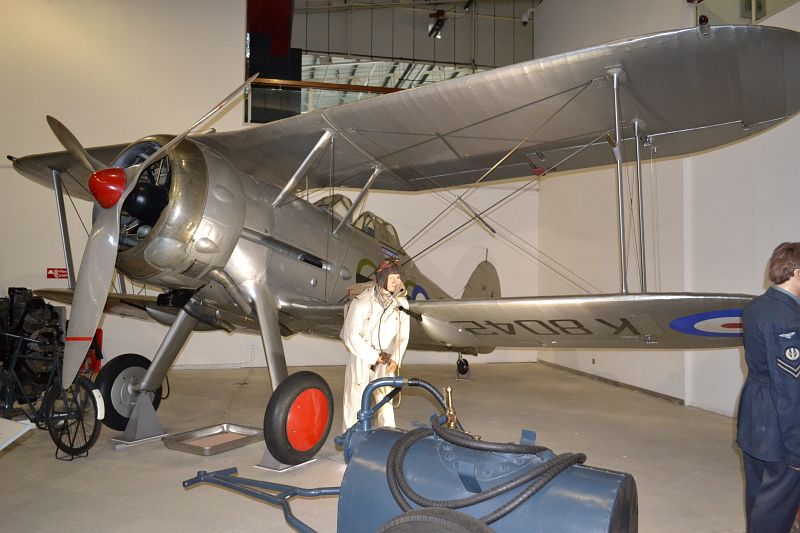
Above: An RAF Gladiator at the RAF Museum Hendon

Above: A flyable Gladiator undergoes maintenance at the Imperial War Museum Duxford
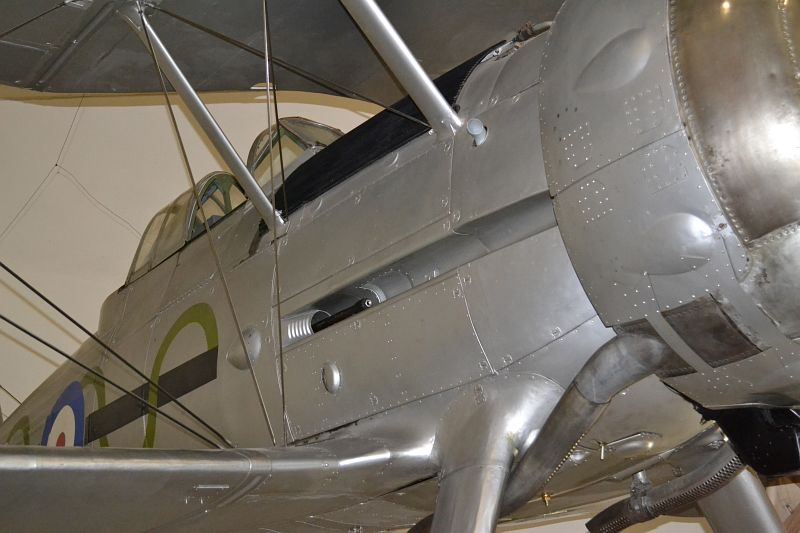
Above: The RAF Museum Hendon once more, showing the Gladiator’s fuselage Vickers Gun installation, firing through the cowl and propeller arc. Two Lewis guns are also fitted under the wings.

Faith, Hope and Charity. Three Sea Gladiators of the Hal Far Fighter Flight, ready for action.
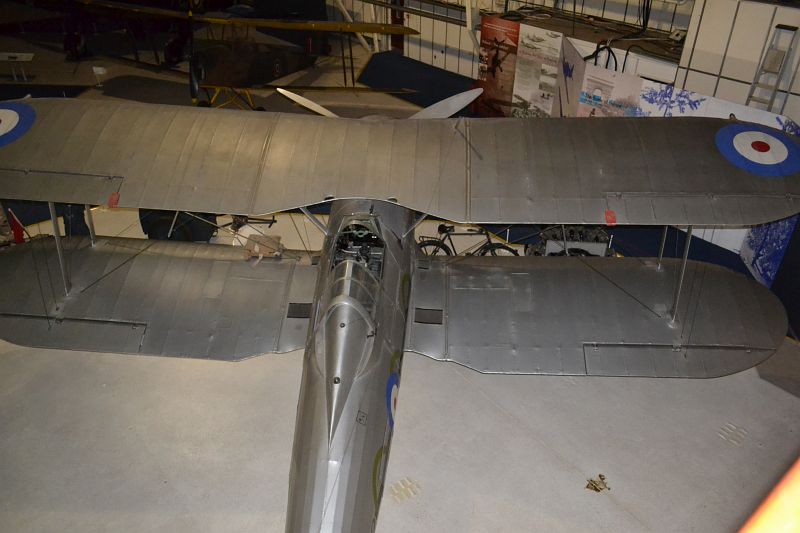
Above: A top view of the Hendon aircraft’s cockpit and wings.
Since September 2021, volunteers at the Malta Aviation Museum have been working to build a flyable Sea Gladiator, including use of original parts recovered from the wreck of N5519 "Charity".
Work progresses and can be viewed by visitors to the museum or on a dedicated Facebook page, although it is expected that the project will still take more than a decade to complete. The picture below was taken during a visit I made in November 2022, and shows the main workshop at the museum with some of the wing ribbing nearly complete.
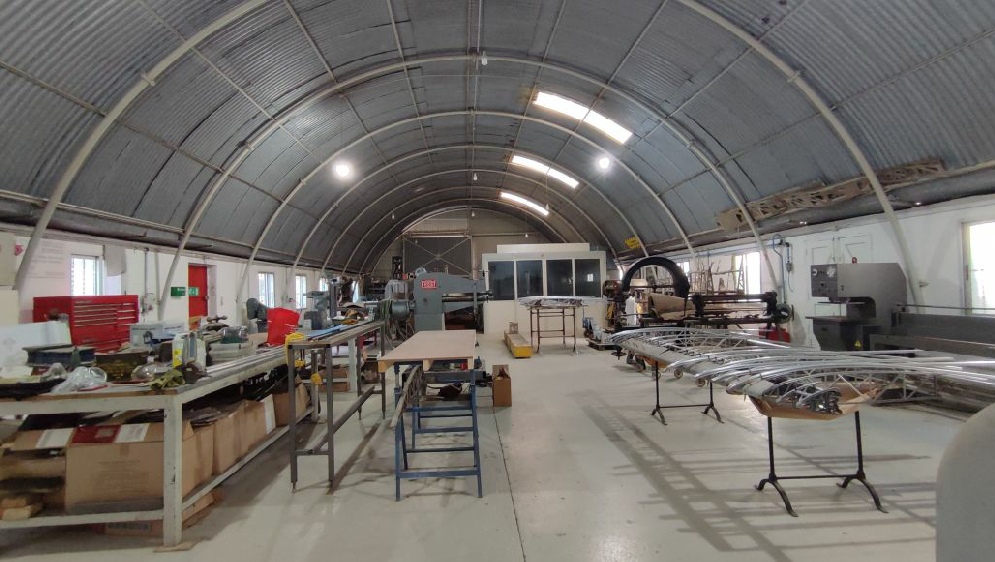
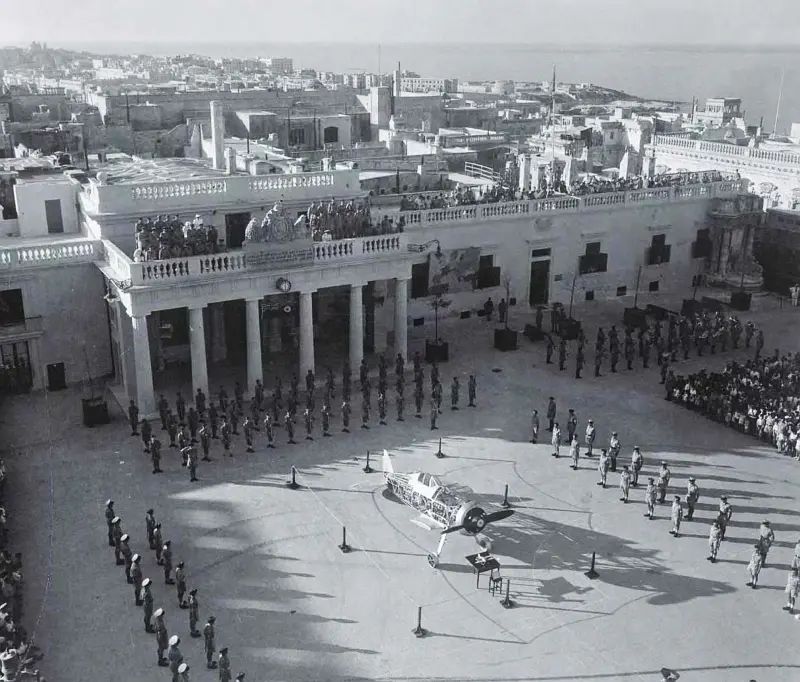
In 1943, Air Vice Marshal Sir Keith Park GCB, KBE,MC and bar, DFC, the AOC Malta, presented the only remaining Malta Sea Gladiator, N5320 “Faith”, to the people of Malta GC at a ceremony held in Valetta. After spending some time in the Governor’s/President’s Palace, she was moved to the National War Museum and partially restored by the RAF.
She remains there in an underground display, despite regular pleas from Maltese aviation enthusiasts and the Malta Aviation Museum for her to be moved somewhere more suitable and where she will be less likely to deteriorate.
Below: © IWM CM 5347 -
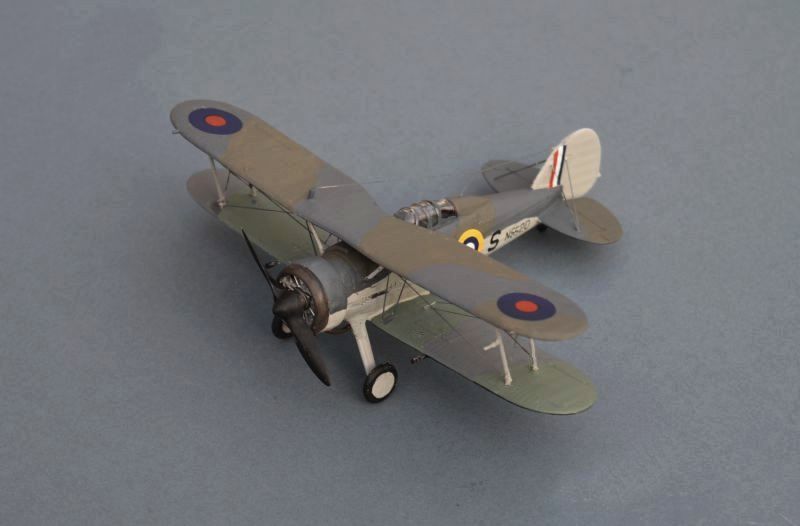
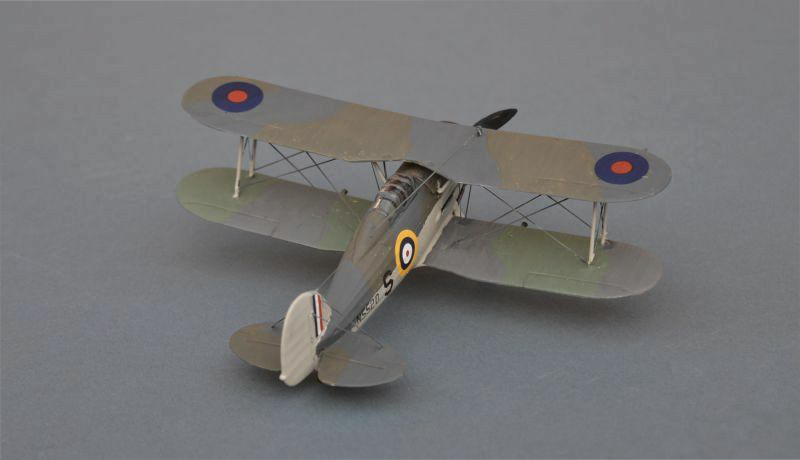
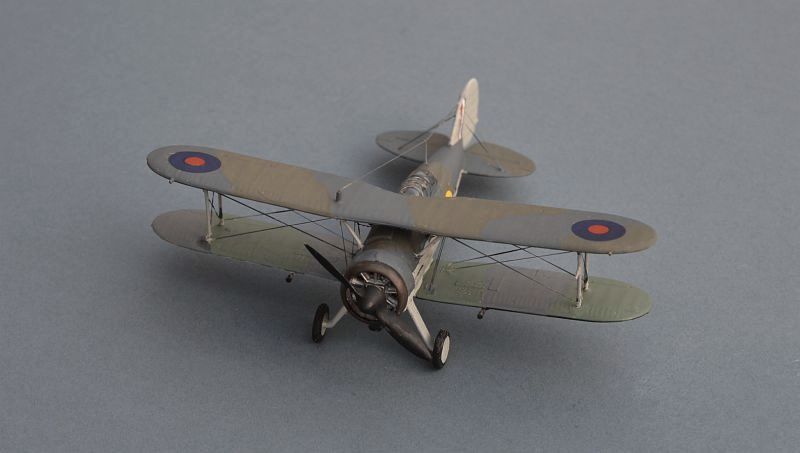

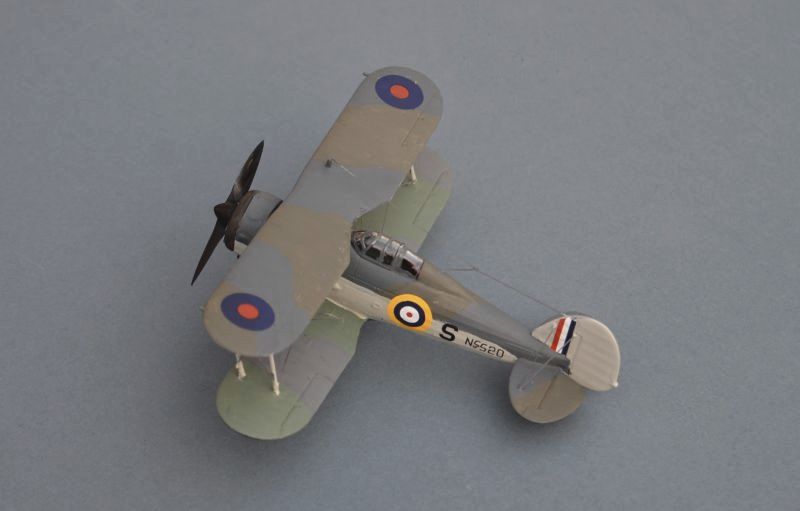
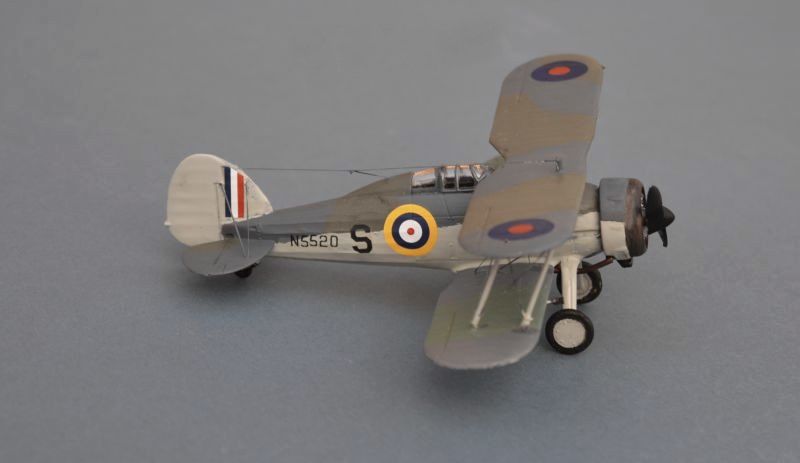
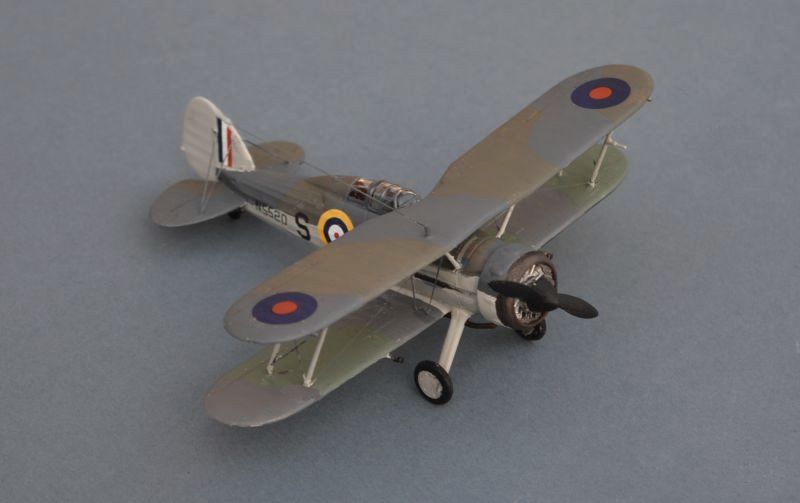
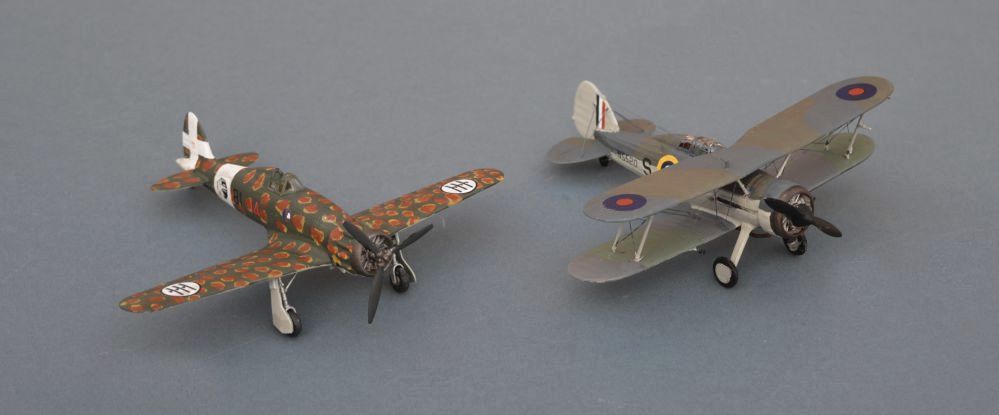
The Sea Gladiator’s earliest battles saw them up against Italian SM.79 Sparviero bombers and the Italian Air Force’s most recent fighter, the MC.200 Saetta, which is my second build of the month. In comparison to the Gladiator, the Saetta was faster, but less manoeuvrable and not particularly well armed.
The first ever Saetta to be downed during WW2 fell to a Gladiator over Sliema, Malta, on 23 June 1940.
© www.gengriz.co.uk

Below: A Savoia Marchetti SM.79 Bomber of the type that conducted the first raids against Malta. This is the Torpedo carrying variant that wrought major destruction on the Allied convoys to Malta.
